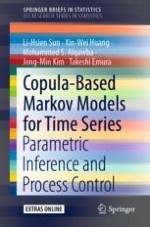This book provides statistical methodologies for time series data, focusing on copula-based Markov chain models for serially correlated time series. It also includes data examples from economics, engineering, finance, sport and other disciplines to illustrate the methods presented. An accessible textbook for students in the fields of economics, management, mathematics, statistics, and related fields wanting to gain insights into the statistical analysis of time series data using copulas, the book also features stand-alone chapters to appeal to researchers.
As the subtitle suggests, the book highlights parametric models based on normal distribution, t-distribution, normal mixture distribution, Poisson distribution, and others. Presenting likelihood-based methods as the main statistical tools for fitting the models, the book details the development of computing techniques to find the maximum likelihood estimator. It also addresses statistical process control, as well as Bayesian and regression methods. Lastly, to help readers analyze their data, it provides computer codes (R codes) for most of the statistical methods.
